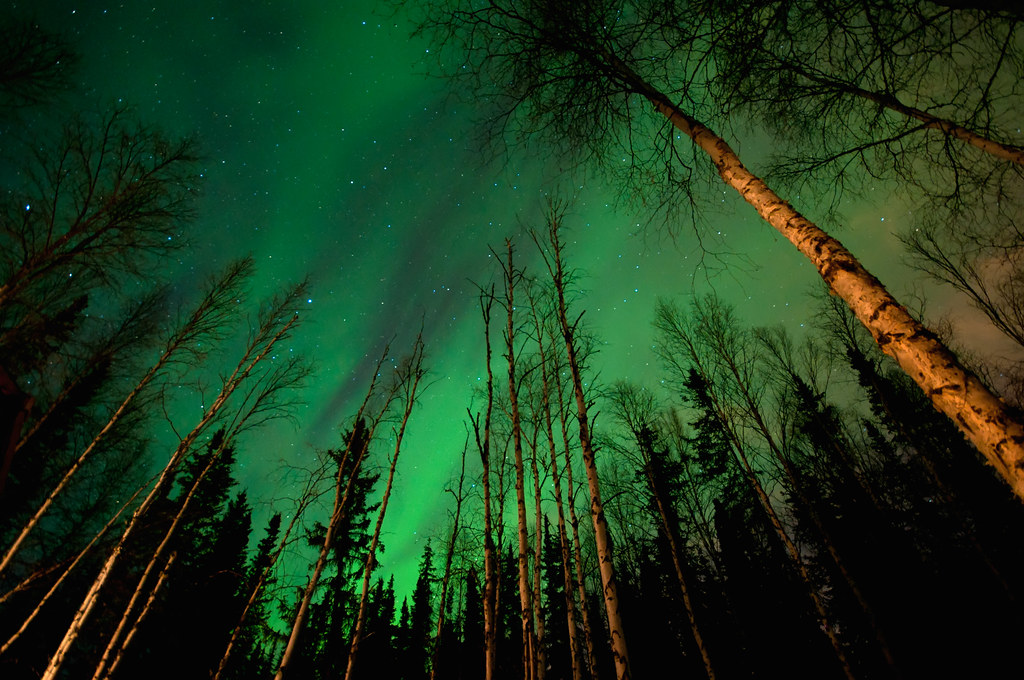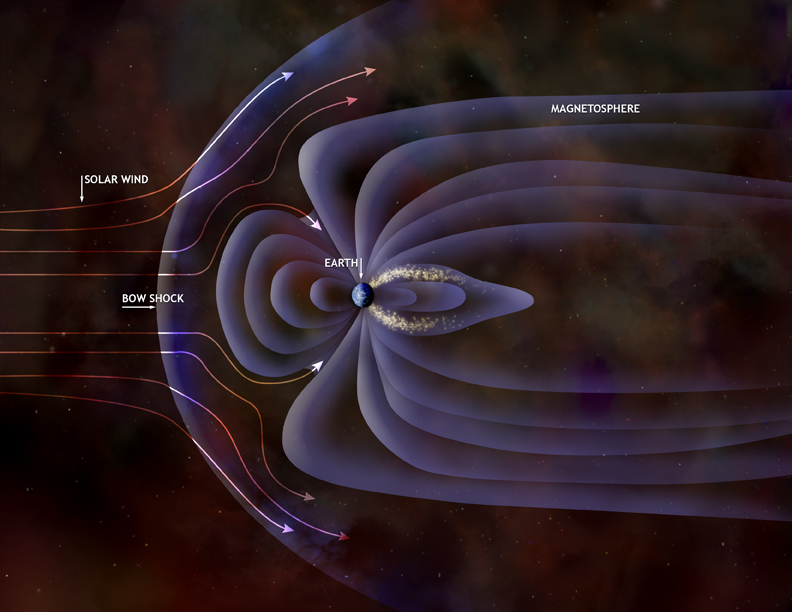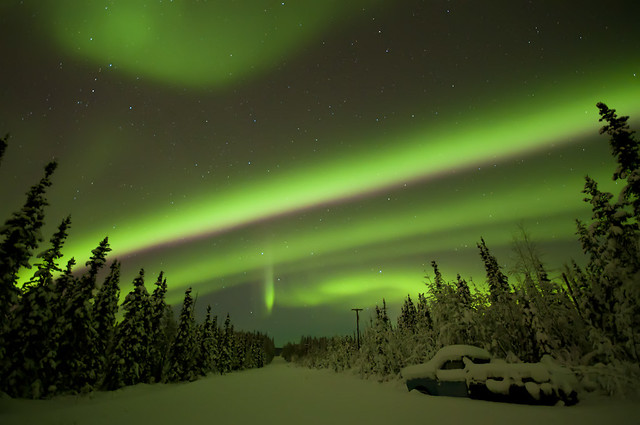The aurora, more commonly known as the Northern Lights, though they happen in the extreme south too (where they're called Southern Lights, derp), and on other planets as well. But we're Sophisticated People here, and we call them aurorae.
"What is the aurora?" I get asked this question sometimes, and my one sentence gee-whiz answer is 'Electrons from the Sun that hit Earth and make light.' That's a reasonable zero-order explanation, but there's a lot more to it than that, and it's worth learning, because it's interesting.
Anyway, this post will be a big-picture description of what an aurora is. Later, I'll do other posts that describe the details, and add links here when approriate. That makes this the first in a series, which should answer any nagging questions as to why I called this 'Part 1'.
The Earth is a big magnet. That's how compasses work. You ever seen that trick where you stick a magnet near some iron filings, and you get those long curvy lines? Like this:
That happens because the little iron flakes line up along the magnetic field lines, which don't really exist, but no one told the iron flakes. Notice how the lines seem to emerge from the north and south poles of the magnet? Take that long, narrow magnet and make it shorter, rounder, and more Earth-shaped, with the top and bottom where the Earth's north and south poles are, and you get the Earth's magnetic field.
Except it's all lopsided. The Sun keeps spraying it with charged particles (called the solar wind), so it gets all squished up on the side closest to the Sun and stretched out on the other side.
The Sun has its own magnetic field, and the magnetic field lines make lots of loops and twisties. Charged particles like to follow magnetic field lines, so normally they're stuck in those loops. But sometimes one of the loops gets twisted free and thrown off into space, which we call a coronal mass ejection, or CME for short. And when that happens, all the charged particles that were stuck in the loop get thrown off with it. There are roughly equal numbers of positive and negative charges, so they cancel each other out, and the collection of particles is more or less neutral. Because it's awkward to say 'a collection of charged particles which is more or less neutral', we have a special word for it - a plasma. Yes, like your TV.
A CME can get fired off in any old direction, and sometimes they happen to hit Earth. When that happens, we get a substorm. Magnetic field lines get peeled off the edge of the Earth closest to the sun (the dayside), and squish together to reconnect on the nightside. When this reconnection happens, there is a release of energy into the particles that were caught on the field line, and they are guided down to the Earth's upper atmosphere (the ionosphere, specifically) These particles have to follow the field lines, and, if you remember, the field lines come back down into the atmosphere near the poles. Aha! That's why the aurora tends to happen in the extreme north and south - because that's where the magnetic field guides the particles to!
These charged particles come raining down near the poles, and eventually, they bump into an air molecule. When that happens, the air molecule is excited into a higher energy-state, then spits that energy back out in the form of a photon - light. What color photon gets spit out depends on what kind of molecule is doing the spitting. The photons shoot down and hit you in the eyeball, and you see an aurora.
The above explanation will make a lot more sense after you watch these two animations. The first is a CME hitting the Earth, with the field lines reconnecting and funneling particles down to an aurora:
The second shows the particles coming down the field lines and striking air molecules to create light:
And that's the gist of it. Until next time.



No comments:
Post a Comment